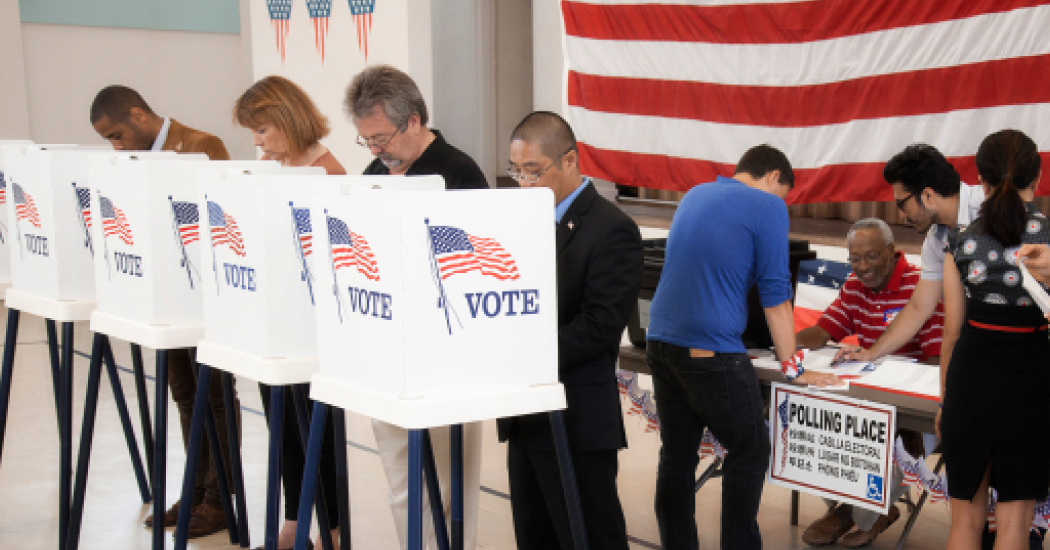Midterm Election Update

Ad spends and political action heats up ahead of the midterms—what does it mean for advertisers?
In the 2018 midterm election cycle, total spend behind political and issue advertising hit $3.96 billion, according to Axios. Through August of 2022, still three months out from election day, there has already been $3.57 billion in detected spend behind political ads putting 2022 on pace to exceed 2018 as the largest midterm election year by ad spend.
With the increased spend, a record percentage of ad spend has shifted to streaming, where data and targeting capabilities allow campaigns to take a more precise approach within rich awareness media. Almost half (44%) of digital political spend in 2022 to date has been on connected TV (CTV) advertising, or streaming video/OTT – compare this to the 2020 election when CTV was a blip in political ad spending and the growth is apparent. Projections have CTV political ads spend estimated at $1.5 billion for the 2022 midterm cycle, which would surpass the $1.3 billion that’s expected to be spent on Google and Facebook.
Despite that shift to CTV, a vast majority of political ad spend remains on traditional TV— specifically local broadcast. In the 2018 midterm cycle, 99.8% of detected TV political ad spend was local. Local is expected to continue to dominate TV political ad spends for the 2022 cycle, fueled by a slew of competitive house races. Political ad spend is expected to be particularly high in battle ground states – an influx of political and issue ad spending will likely create tight marketplace conditions locally and any brands with local TV investments may face clearance challenges and should expect tiered rates pre-/post-election.
Although political TV ad spending remains largely focused within local, national news coverage of the races creates some challenges (and potential viewership upside) for advertisers.
National coverage of the midterm election will be primarily condensed to the weeks leading up to, and immediately following, election week. During a typical election year, news viewership surges during election week itself and that increased consumption is incremental to normal viewing; within non-news cable, viewership typically remains stable week to week with no decline during election week. As a result, advertisers may see increased competition as brands try to capitalize on higher viewership levels and higher pre-emptions for election coverage— securing a portion of news investment in advance as fixed will help avoid higher rates and pre-emption.
Regardless of openness to political ads, most major social platforms are proactively implementing tools and strategies for combating misinformation during the midterm cycle.
While broadcasting companies are required to accept political and issue ads, streaming and internet platforms are not—notably, both TikTok and Twitter ban political ads, but the influx of spend has made some digital platforms rethink their stance. After pausing political ads in 2020, Spotify announced they would resume accepting political ads for candidates, political parties, PACs, and elected officials this year. Similarly, in late July, Disney announced they would allow political issue ads alongside candidate ads on Hulu as long as they align with Disney’s regular ad standards—the change aligned Hulu’s policies with Disney’s policy for their cable networks like ESPN and FX.
// Facebook
Parent company Meta does accept political ads, but recently announced they were introducing strict guidelines for the 2022 midterm election cycle in an effort to better mitigate the spread of misinformation. Broadly, any posts rated false or partly false by select fact-checking partners will receive a warning label that forces users to click past a banner denoting “false information” before accessing the content. More specifically, Meta’s new guidelines are largely focused around disallowing and removing ads that contain false information about dates, locations, times, and methods of voting; this adds to their previous restrictions around ads that include misinformation about who can vote, what votes will be counted, and voting qualifications.
// TikTok
Despite TikTok’s ban on political advertising, which includes sponsored content from influencers, the company resurfaced their fact checking program from 2020, in part because political advertising within paid influencer content and user-created videos can be harder to detect. The program prevents certain videos from being recommended to users until verified by outside fact checkers. In an effort to proactively counteract misinformation on the platform, TikTok has launched their election information center six weeks earlier than they did in 2020.
// Twitter
Like TikTok, Twitter does not allow political advertising, but faces some of the same challenges with moderating content on the platform. Their Civic Integrity Policy has been reactivated and includes warning labels that are added to tweets containing false information about elections, election integrity, or voting. Any tweets that are tagged with warning labels are then not pushed out by the algorithm and Twitter reserves the right to remove false or misleading content.
// YouTube
To date, YouTube is one of the few online platforms that has not announced a midterm election policy or misinformation plan. While midterm political spend remains heavily rooted in local broadcast TV, as more political spend shifts to digital, advertisers will have to consider and account for potential impacts to marketplace conditions, brand safety, and performance.
This article is featured in Media Impact Report No. 38. View the full report here.
